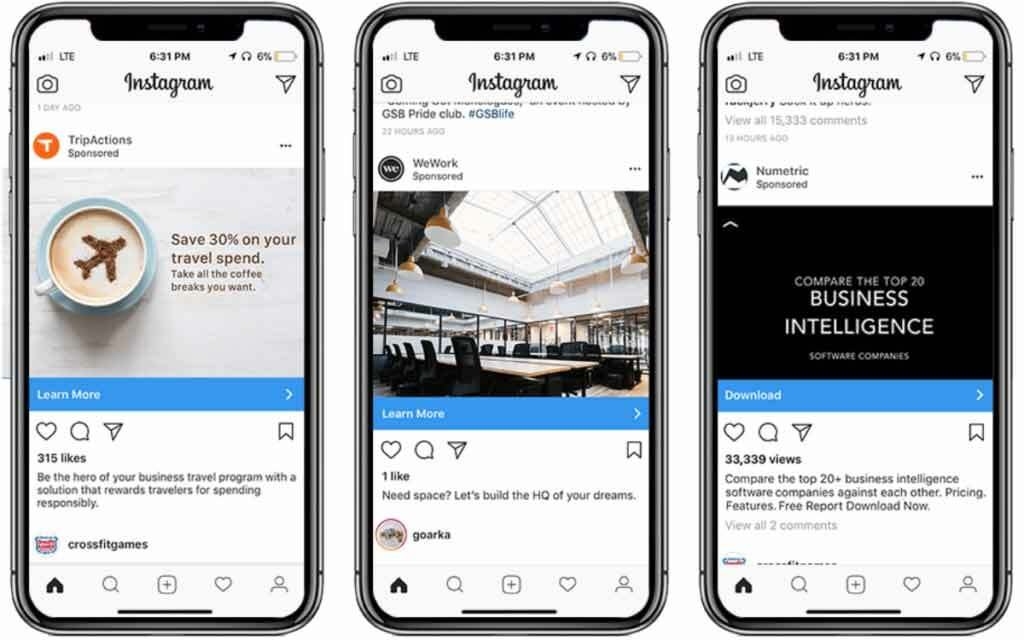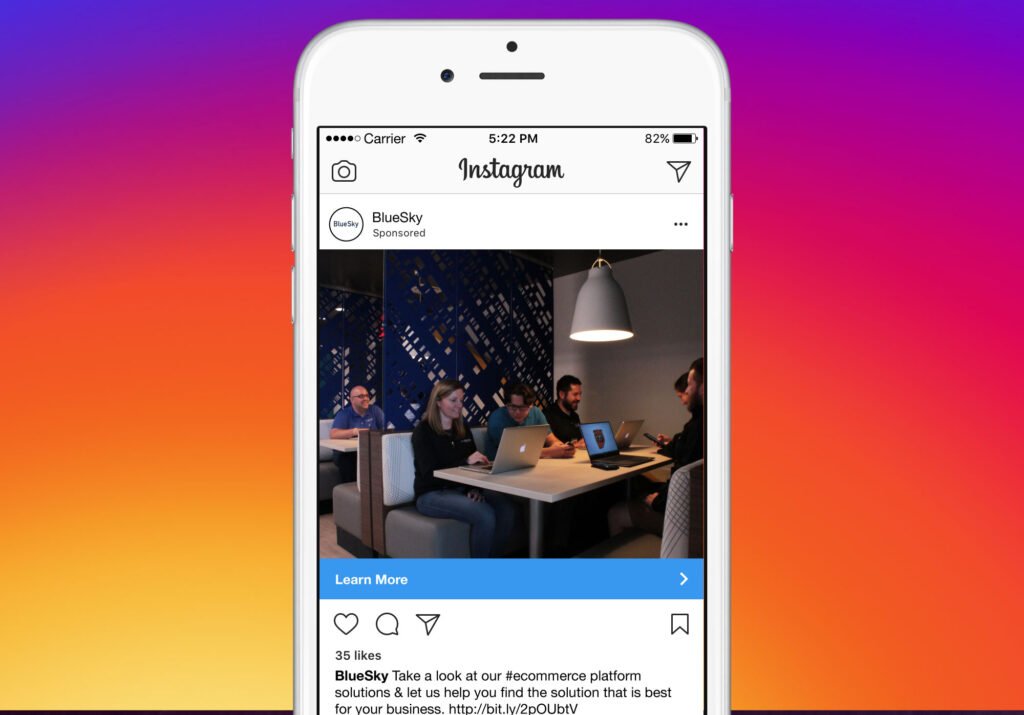Table of Contents
In today’s digital age, social media platforms have become powerful tools for businesses to connect with their target audience and drive meaningful engagement. Among these platforms, Instagram stands out as a dynamic and visually-driven platform that offers unparalleled opportunities for advertising success. With its diverse user base, robust ad targeting options, and engaging ad formats, Instagram has emerged as a cornerstone of modern digital marketing strategies. In this comprehensive guide, we’ll delve into everything you need to know to harness the full potential of Instagram advertising and achieve your business objectives.
Understanding Instagram Advertising

Instagram advertising is a strategic approach to promote products or services on the Instagram platform, leveraging its vast user base and engaging visual content. Businesses create sponsored content that appears seamlessly within users’ feeds, stories, or explore pages, blending organically with the platform’s aesthetic. Advertisers can target specific demographics, interests, behaviors, and locations to reach their desired audience effectively.
Instagram offers various ad formats, including photo ads, video ads, carousel ads, stories ads, and more, allowing advertisers to showcase their offerings in diverse and engaging ways. With its user-friendly Ads Manager platform, advertisers can monitor campaign performance, track key metrics, and optimize their strategies for maximum impact. Ultimately, Instagram advertising enables businesses to enhance brand visibility, drive website traffic, increase engagement, and ultimately, achieve their marketing objectives in a visually captivating and immersive environment.
Getting Started with Instagram Advertising

Getting started with Instagram advertising is an exciting journey that can significantly boost your business’s visibility, engagement, and ultimately, its bottom line. Here’s a comprehensive guide on how to kickstart your Instagram advertising efforts:
- Create an Instagram Business Account: If you haven’t already, start by creating a business account on Instagram.
- Connect Your Facebook Page: Since Instagram is owned by Facebook, linking your Instagram account to your Facebook page is essential for running ads. This integration allows for seamless management of your ads across both platforms.
- Understand Instagram’s Ad Policies and Guidelines: Familiarize yourself with Instagram’s advertising policies and guidelines to ensure compliance and prevent your ads from being disapproved. Pay attention to rules regarding prohibited content, ad formats, and community standards.
- Set Up Your Ad Account and Payment Method: Navigate to Facebook Ads Manager and create an ad account if you don’t already have one. Then, link your Instagram account and set up your preferred payment method to fund your ad campaigns.
- Define Your Advertising Objectives: Before creating your first ad, clarify your advertising objectives. Are you aiming to increase brand awareness, drive website traffic, generate leads, or boost sales? Defining your goals will inform your ad strategy and campaign setup.
- Navigate the Instagram Ads Manager: Familiarize yourself with the Instagram Ads Manager interface, where you’ll create, manage, and track your ad campaigns. Take the time to explore the various features, including campaign creation, audience targeting, ad creative, and performance tracking.
- Choose the Right Ad Format: Instagram offers various ad formats to suit different campaign goals and preferences. These include photo ads, video ads, carousel ads, story ads, and collection ads. Select the format that aligns best with your campaign objectives and content assets.
Crafting Compelling Instagram Ads

Crafting compelling Instagram ads involves a combination of creative visuals, engaging copywriting, and strategic targeting to capture the attention of your audience and inspire action. Here’s a detailed breakdown of each element:
Visual Content
- High-Quality Imagery: Use eye-catching, high-resolution images or videos that align with your brand aesthetic and appeal to your target audience.
- Consistent Branding: Maintain a consistent visual identity, including colors, fonts, and imagery, to reinforce brand recognition and credibility.
- Lifestyle Imagery: Showcase your product or service in real-life scenarios to help viewers envision themselves using or benefiting from it.
- Emotive Visuals: Use images or videos that evoke emotion, whether it’s joy, inspiration, excitement, or curiosity, to create a connection with viewers.
Compelling Copy-writing
- Clear Messaging: Communicate your value proposition or key message concisely and clearly to grab attention and generate interest.
- Benefit-Oriented Language: Highlight the benefits of your product or service rather than just features, focusing on how it can solve a problem or improve the viewer’s life.
- Persuasive Language: Use persuasive language and CTAs (calls-to-action) to encourage viewers to take the desired action, whether it’s to learn more, shop now, or sign up.
- Use of Hashtags: Incorporate relevant hashtags to increase discoverability and reach a broader audience, but ensure they’re aligned with your brand and campaign objectives.
Strategic Targeting
- Audience Segmentation: Identify and segment your target audience based on demographics, interests, behaviors, or past interactions with your brand.
- Personalization: Tailor your ad content and messaging to resonate with specific audience segments, addressing their unique needs, preferences, or pain points.
- Retargeting: Utilize retargeting strategies to reach users who have previously engaged with your brand or visited your website, increasing the likelihood of conversion.
- Lookalike Audiences: Expand your reach by targeting users who share similarities with your existing customers, leveraging lookalike audience targeting based on customer profiles or behaviors.
Testing and Optimization
- A/B Testing: Experiment with different ad creatives, copy variations, CTAs, or audience segments to identify what resonates best with your target audience.
- Performance Monitoring: Continuously monitor the performance of your ads, tracking key metrics such as click-through rates, conversion rates, and return on ad spend (ROAS).
- Iterative Optimization: Use insights from performance data to refine your ad campaigns, adjusting targeting parameters, creative elements, or messaging to improve effectiveness and ROI over time.
By combining visually captivating imagery or videos with compelling copywriting and strategic targeting, businesses can create Instagram ads that not only capture attention but also drive meaningful engagement and conversions from their audience.
Advanced Targeting Strategies

Advanced targeting strategies in Instagram advertising involve going beyond basic demographic parameters to reach highly specific and relevant audience segments. These strategies leverage the platform’s extensive data and targeting options to pinpoint individuals who are most likely to engage with your ads and take desired actions. Here’s a breakdown of some advanced targeting strategies:
Demographic Targeting: While demographic targeting is a foundational aspect of any advertising campaign, advanced demographic targeting allows for more precise segmentation based on factors such as income level, education level, relationship status, job title, and more.
Interest-Based Targeting: Interest-based targeting involves reaching users who have shown interest in specific topics, hobbies, or activities. Instagram gathers data on user interests from their interactions on the platform, including likes, comments, and engagement with related content. By targeting users based on their interests, you can tailor your ads to resonate with their passions and preferences, increasing the likelihood of engagement and conversion.
Behavioral Targeting: Behavioral targeting allows advertisers to reach users based on their past behaviors and interactions both on and off the platform. This includes factors such as purchase behavior, browsing history, app usage, and more. By analyzing user behavior, advertisers can identify patterns and preferences, allowing for highly targeted ad delivery to users most likely to be receptive to their messaging.
Lookalike Audiences: Lookalike audiences are created by leveraging the data of your existing customer base to identify users who share similar characteristics and behaviors. By analyzing the traits of your most valuable customers, such as demographics, interests, and purchase history, Instagram can identify and target new users who exhibit similar traits. Lookalike audiences enable advertisers to expand their reach while maintaining relevance, resulting in higher-quality leads and conversions.
Custom Audiences: Custom audiences allow advertisers to target specific groups of users based on their interactions with your brand. This includes users who have visited your website, engaged with your content, or interacted with your app. By retargeting these users with tailored ads, you can nurture leads, encourage repeat purchases, and drive conversions among audiences already familiar with your brand.
Retargeting Strategies: Retargeting involves reaching users who have previously interacted with your brand but haven’t yet converted. This can include users who have visited your website, added items to their cart, or engaged with your social media content. By retargeting these users with personalized ads, you can remind them of their interest in your products or services and encourage them to complete the desired action, whether it’s making a purchase or signing up for a newsletter.
Contextual Targeting: Contextual targeting involves delivering ads to users based on the context of the content they are viewing. This can include targeting users based on specific hashtags they have used, accounts they follow, or content they engage with. By aligning your ads with relevant content, you can ensure that they are seen by users who are already interested in related topics, maximizing their effectiveness and engagement.
Optimizing Your Instagram Ad Campaigns

Once you’ve launched your Instagram ad campaigns, the real work begins: optimization. Optimization is the ongoing process of fine-tuning your campaigns to improve their performance and achieve your advertising objectives. In this chapter, we’ll explore various strategies and tactics for optimizing your Instagram ad campaigns to maximize their effectiveness.
Testing Ad Creative and Messaging
One of the most effective ways to optimize your Instagram ad campaigns is through A/B testing, also known as split testing. A/B testing involves creating multiple variations of your ad creative, messaging, or targeting and testing them against each other to determine which performs best. You can experiment with different visuals, ad copy, calls-to-action (CTAs), and even targeting parameters to identify the winning combination that resonates most with your audience. By continuously testing and refining your ad elements, you can optimize your campaigns for higher engagement, click-through rates, and conversions.
Monitoring Ad Performance: Key Metrics to Track
To effectively optimize your Instagram ad campaigns, it’s essential to closely monitor their performance and track key metrics. Some of the most important metrics to track include:
- Click-through rate (CTR): The percentage of people who clicked on your ad after seeing it.
- Conversion rate: The percentage of people who completed a desired action, such as making a purchase or signing up for a newsletter, after clicking on your ad.
- Cost per click (CPC): The average cost you pay for each click on your ad.
- Return on ad spend (ROAS): The ratio of revenue generated to the amount spent on advertising, indicating the effectiveness of your ad campaigns.
- Impressions and reach: The number of times your ad was displayed (impressions) and the number of unique users who saw your ad (reach).
By regularly monitoring these metrics and analyzing trends over time, you can gain valuable insights into the performance of your ad campaigns and identify areas for improvement.
Adjusting Bids and Budgets for Optimal Results
Another crucial aspect of optimizing your Instagram ad campaigns is managing your bids and budgets effectively. Depending on your campaign objectives and competition within your target audience, you may need to adjust your bids to ensure your ads are being shown to the right people at the right time.
If you’re not seeing the desired results, consider increasing your bids to improve ad placement and visibility. Similarly, if your budget is limited, prioritize high-performing ad sets and allocate more budget to them while scaling back on underperforming ones. By optimizing your bids and budgets based on performance data, you can maximize the impact of your advertising budget and achieve better results.
Ad Scheduling and Delivery Optimization
Timing is everything when it comes to advertising on Instagram. By analyzing your audience’s behavior and engagement patterns, you can identify the optimal times to deliver your ads for maximum impact. Use insights from Instagram’s ad reporting tools to determine when your audience is most active and adjust your ad scheduling accordingly.
Additionally, consider leveraging ad delivery optimization options such as ad delivery optimization for conversions or reach to further enhance the performance of your campaigns. By delivering your ads at the right time to the right audience, you can improve engagement, click-through rates, and overall campaign effectiveness.
Implementing Ad Placements and Device Targeting
Instagram offers various ad placement options, including feed ads, story ads, explore ads, and carousel ads. Depending on your campaign objectives and target audience preferences, certain placement options may perform better than others. Experiment with different ad placements to see which ones drive the best results for your campaigns. Additionally, consider implementing device targeting to optimize your ads for specific devices such as mobile phones or tablets. By tailoring your ad placements and device targeting to align with your audience’s preferences and behaviors, you can enhance the effectiveness of your Instagram ad campaigns and improve their overall performance.
Utilizing Instagram Insights for Data-Driven Decisions
Finally, leverage Instagram Insights, the platform’s built-in analytics tool, to gather valuable data and insights about your audience, content performance, and ad campaigns. Instagram Insights provides metrics such as demographics, engagement, and impressions, allowing you to better understand your audience and their preferences. Use these insights to inform your ad targeting, creative decisions, and overall marketing strategy. By taking a data-driven approach to optimization, you can continuously refine your Instagram ad campaigns and achieve better results over time.
Conclusion
Mastering Instagram advertising is essential for businesses looking to thrive in today’s digital landscape. With its diverse user base, engaging ad formats, and sophisticated targeting options, Instagram offers unparalleled opportunities to connect with potential customers and drive meaningful results. By understanding the intricacies of ad creation, targeting, and optimization, businesses can craft compelling campaigns that resonate with their audience and achieve their marketing objectives.
Moreover, by staying abreast of emerging trends and innovations in Instagram advertising, businesses can stay ahead of the curve and maintain a competitive edge. Ultimately, Instagram advertising represents a dynamic and powerful tool for businesses to build brand awareness, drive website traffic, and boost sales. By implementing the strategies outlined in this guide and continually refining their approach, businesses can unlock the full potential of Instagram advertising and propel their success in the digital realm.



Leave a Reply